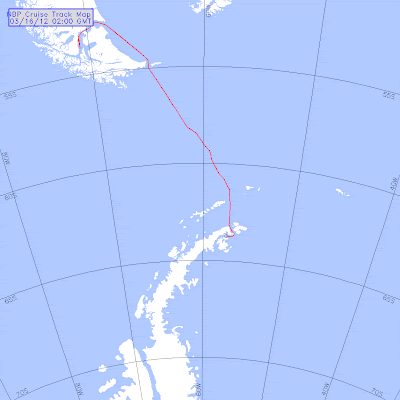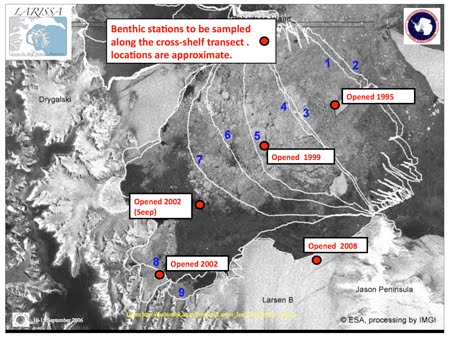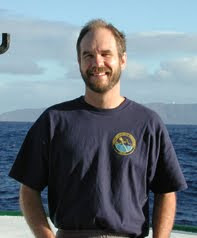Laura and Jackie taking water samples from the Niskin bottles
Unfortunately, we were unable to recover the whale-bone lander yet due to some issues with the gear and poor weather. The thick fog that is engulfing the ship offers very little visibility to spot the lander once it rises from the seafloor to the ocean surface, so the principal investigators chose to postpone this operation until later in the cruise. The extreme climate of Antarctica produces fascinating ecosystems, but also often makes our oceanography sampling very challenging.
As we headed further south, the fog dissipated in the afternoon and we spotted the first iceberg of the cruise, and then many more! We are now sailing through the real polar ocean, with ice floes and icebergs everywhere! We watched Adelie penguins running over the ice floes and sliding on their bellies to run away from us; Minke whales inspecting the waters around the icebergs and skillfully navigating in between them; crabeater seals and the fur seals resting on the ice! What an experience on our first day in the Antarctic!
Adelie penguins on an ice floe
Crabeater seal
Jackie enjoying the view of the icebergs
Our second planned station is the Vega Drift, a rapidly accumulating drift of sediment on the eastern side of the Antarctic Peninsula, near Vega Island. The Vega “drift” is formed by current focusing, and is rich with organic matter (yummy to sediment microbes) and and layered sediments (good for reconstructing geological history). We will use a Kasten core to take a sample of sediment up to 6 m long and to give us insights into past processes and environmental conditions in the Antartic Peninsula area over the last 3000 - 5000 y.

Scientists getting ready to take samples of the sediments from the 6-meters long Kasten core (Photo A. Lancaster)

Map of the cruise track starting in Punta Arenas, Chile (at the upper part of the image) and ending on the eastern side of the Antarctic Peninsula (at the lower part of the image) where we are now.





No comments:
Post a Comment